 Carter Horsley
Carter HorsleyDec 23, 2011
Carter's Review
This seven-story building at 184 Kent Avenue nine blocks north of the Williamsburg Bridge in Brooklyn was erected in 1915 by Austin, Nichols & Company, one of the leading grocery wholesalers in the country, and it was designed by Cass Gilbert, the architect of the famous Woolworth Building in Lower Manhattan, the former U. S. Customs House at the foot of Broadway, the New York Life Insurance Company tower on Madison Avenue at 26th Street.
According to the New York City Landmarks Preservation Commission, it is “one of the earliest concrete warehouses in the United States designed by a nationally prominent architect.”
The large building was acquired in 1985 by the Kestenbaum and Hirsch families of Williamsburg who obtained a variance in 1999 from the Board of Standards & Appeals to convert the warehouse to about 220 rental apartments designed by Ralf Mayer and Thomas Bargetz.
It was designated an official city landmark in 2005 when a developer planned to add towers to the existing building, whose façade was then patchy with many areas of missing paint, and then the City Council overturned the landmark designation, which led to the Mayor vetoing the action of the City Council, which subsequently voted to override his veto. A December 8, 2005 article by Robin Pogrebin in The New York Times said that “Simcha Fedler, chairman of the council’s landmarks committee,...[declared that] this building is a piece of trash, and it should be knocked down.”
In 2007, the National Trust for Historic Preservation put the Williamsburg waterfront on a list of “most-endangered places” and the property was sold and the new owner, 184 Kent Fee L.L.C., which is also known as JMH Development of which Jason Halpern and Glen Rau are principals, donated a deed of easement, which prohibits destruction of the warehouse and preserves its size and shape so that it could use Historic Preservation tax Credits to renovate the building, an act that curbed.com said in an article January 12, 2009 was “essentially preserving it without landmarking.”
In 2015, JMH Development became partners with Kushner Cos., which is headed by Jared Kushner, LIVWRK, which is headed by Asher Abehsera, and Rockpoint on the project, which calls for a $413.9 million condo conversion according to a May 22, 2105 article by Hana R. Alberts at ny.curbed.com.
The building, which is also known as 1-41 North Street, has Egyptian motifs with a coved, or flaring, cornice, battered walls and narrow window openings.
The building has 338 apartments.
SLCE is the architect for the conversion. Slade Architecture has designed the interiors and SCAPE is the landscape architect for the development.
The building has 17,850-square-feet of 25-foot-high retail space.
Bottom Line
A very impressive, very fine and large riverfront industrial building designed in minimalist Egyptian Revival style by Cass Gilbert, one of the city’s finest architects, was the subject of one of the city’s most heated landscape controversies in which the City Council overturned the Mayor’s veto of its overturning of its designation by the Landmarks Preservation Commission. The belated happy result, however, was that towers were not added, a large courtyard was created and it was converted to residential condominiums.
Description
The building has a broad, landscaped plaza at its entrance with a large steel and glass marquee.
The ground floor windows facing the plaza are quite large with 9 sections with 6 panes each. The upper floors have three narrow vertical window bays above the large first-floor window units.
The courtyard has two levels.
Amenities
The building has a 24-hour doorman, a rooftop pool, a fitness center with river views, a canopied entrance, a landscaped terrace, on-site valet parking, bicycle storage, Zipcar service, a 20,000-square-foot landscaped courtyard that can be used as an event space for artists and it is pet-friendly.
Apartments
Apartments have ceilings that range in height from 12 to 15 feet.
Apartment C706 is a three-bedroom unit with an entry foyer that lead to a long hall that leads to the 20-foot-long living room with an open kitchen and a terrace.
Apartment B306 is a two-bedroom unit with a 21-foot-wide living/dining area with an open kitchen and a very wide terrace.
Apartment A703 is a two-bedroom unit with an entry foyer that leads past a pass-through kitchen to a 13-foot-long living/dining area and there is a wide terrace next to the master bedroom.
Apartments B301, B401, B501 and B601 are two-bedroom units with living/dining rooms that are 18-feet-long and balconies off the master bedrooms.
Apartment D705 is a two-bedroom unit with an entry foyer that leads to an 18-foot-wide living room with an open kitchen alcove.
Apartments D302, D402, D502 and D602 are studio units with terraces with 15-foot-wide living/dining areas with open kitchen and broad terraces.
Apartment B310, B410, B510 and B610 are studio units with a 19-foot-long living/dining area with an open kitchen and a three-sided small terrace.
History
In its September 20, 2005 designation report on the building, the Landmarks Preservation Commission gave the following commentary:
“The Austin, Nichols & Co. Warehouse is one of the largest and most significant structures on the Brooklyn waterfront. Financed by Havemeyer & Elder, it was designed and built to serve Austin, Nichols & So., the world’s largest wholesale grocery business. Established by James E. Nichols and five former associates of Fitts & Austin in 1879, the company grew to occupy nine buildings in Manhattan before moving to the Eastern District Terminal….Under the Sunbeam Foods Label, all types of products were prepared, processed and packaged in the building, from dried fruit and coffee, to cheese, olives and peanut butter. In 1934, Austin Nichols entered the liquor business and the building remained its headquarters until the late 1950s….Six stories tall, the simply-treated elevations are unusual in that they slope inward or batten and are crowned by a coved or flared cornice, features that led critic Arthur S. McEntee to describe the warehouse as “an excellent example of the modern adaptation of Egyptian architecture to present-requirements of commercialism….European architects, such as Le Corbusier and Walter Gropius, identified this type of industrial building as inspiration for the development of European modernism….not only is it a superb and high visible example of early twentieth century engineering, but it is also one of the earliest reinforced concrete warehouses in the United States designed by a nationally prominent architect.”
The report also said that the building is “austere and monumental, relying on scale and proportion, rather than three-dimensional ornament, to create one of the most visually prominent structures on the Brooklyn waterfront.”
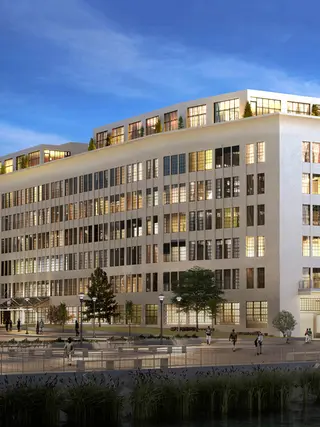
- Condo built in 1915
- Converted in 2017
- 8 apartments currently for sale ($690K to $3.75M)
- 3 apartments currently for rent ($4.5K to $7.6K)
- Located in Williamsburg
- 338 total apartments 338 total apartments
- 10 recent sales ($687.3K to $2.4M)
- Doorman
- Pets Allowed
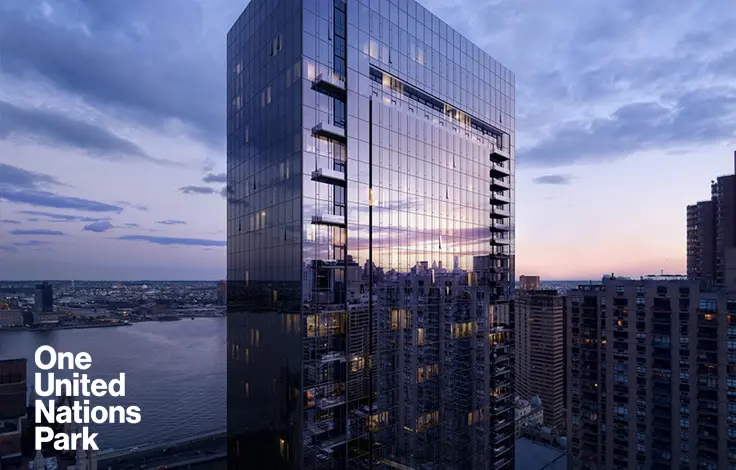
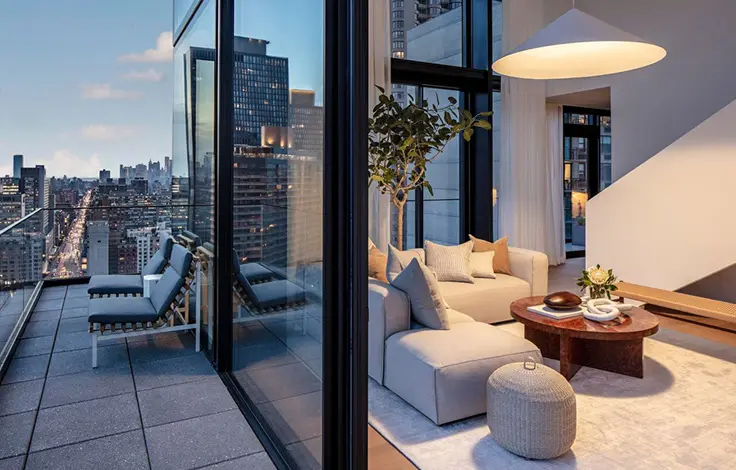
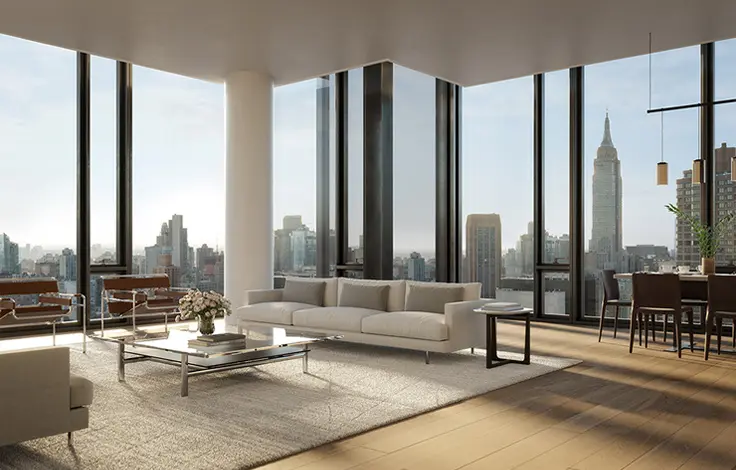

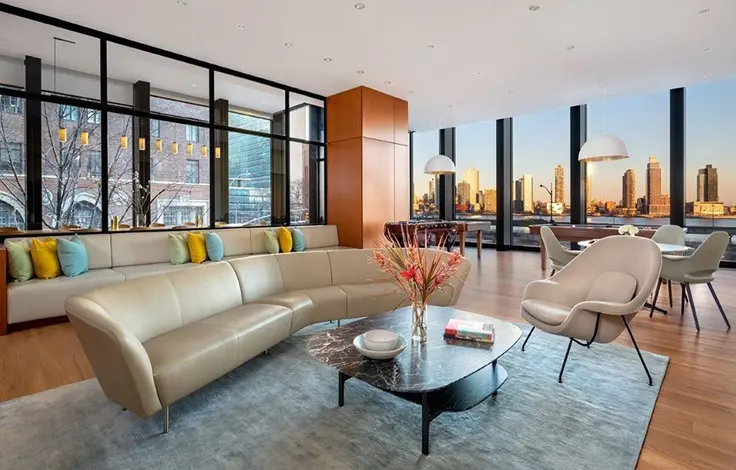
 6sqft delivers the latest on real estate, architecture, and design, straight from New York City.
6sqft delivers the latest on real estate, architecture, and design, straight from New York City.
